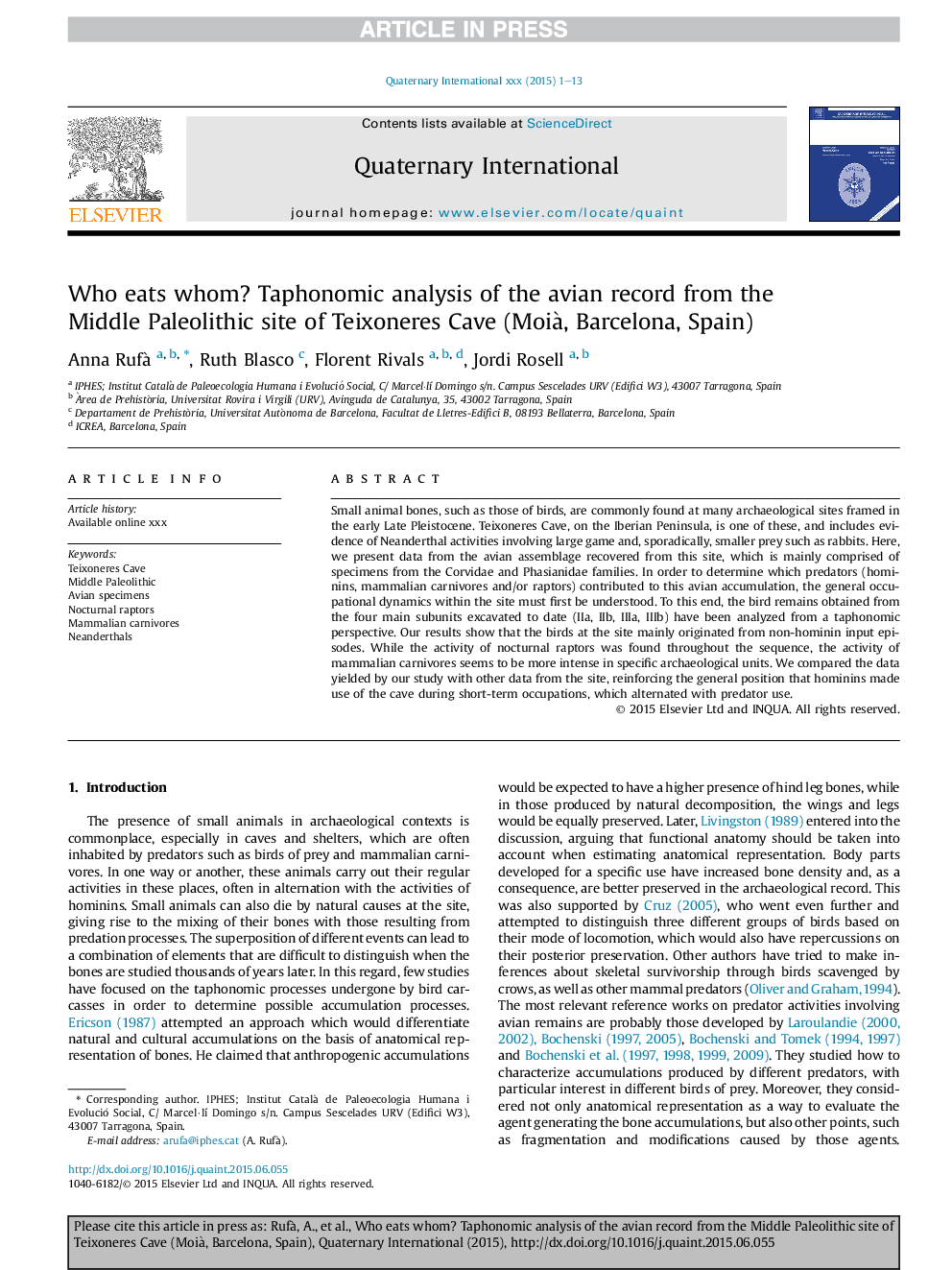| Article ID | Journal | Published Year | Pages | File Type |
|---|---|---|---|---|
| 5114188 | Quaternary International | 2016 | 13 Pages |
Abstract
Small animal bones, such as those of birds, are commonly found at many archaeological sites framed in the early Late Pleistocene. Teixoneres Cave, on the Iberian Peninsula, is one of these, and includes evidence of Neanderthal activities involving large game and, sporadically, smaller prey such as rabbits. Here, we present data from the avian assemblage recovered from this site, which is mainly comprised of specimens from the Corvidae and Phasianidae families. In order to determine which predators (hominins, mammalian carnivores and/or raptors) contributed to this avian accumulation, the general occupational dynamics within the site must first be understood. To this end, the bird remains obtained from the four main subunits excavated to date (IIa, IIb, IIIa, IIIb) have been analyzed from a taphonomic perspective. Our results show that the birds at the site mainly originated from non-hominin input episodes. While the activity of nocturnal raptors was found throughout the sequence, the activity of mammalian carnivores seems to be more intense in specific archaeological units. We compared the data yielded by our study with other data from the site, reinforcing the general position that hominins made use of the cave during short-term occupations, which alternated with predator use.
Keywords
Related Topics
Physical Sciences and Engineering
Earth and Planetary Sciences
Geology
Authors
Anna Rufà , Ruth Blasco, Florent Rivals, Jordi Rosell,
